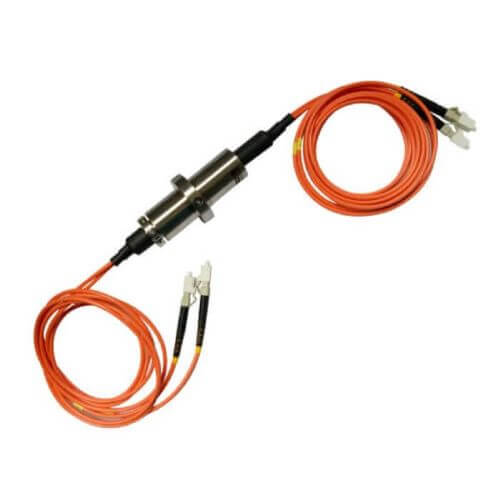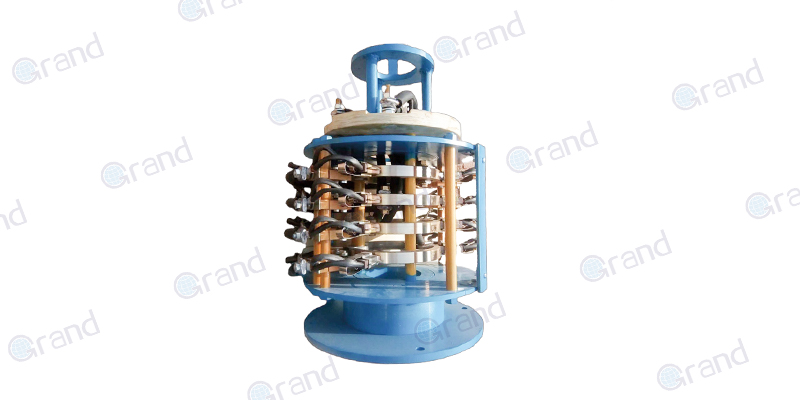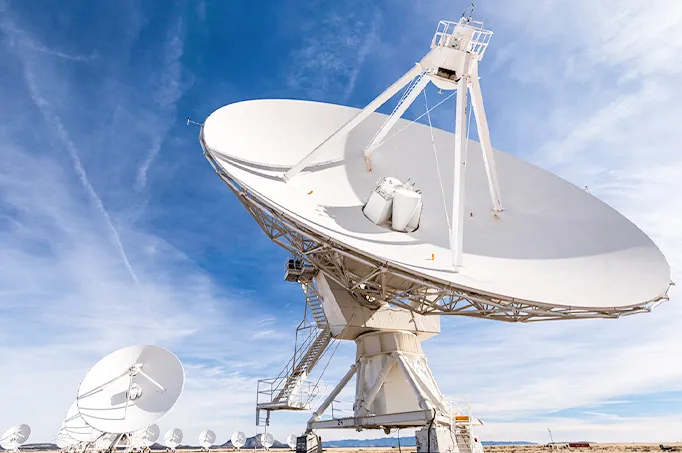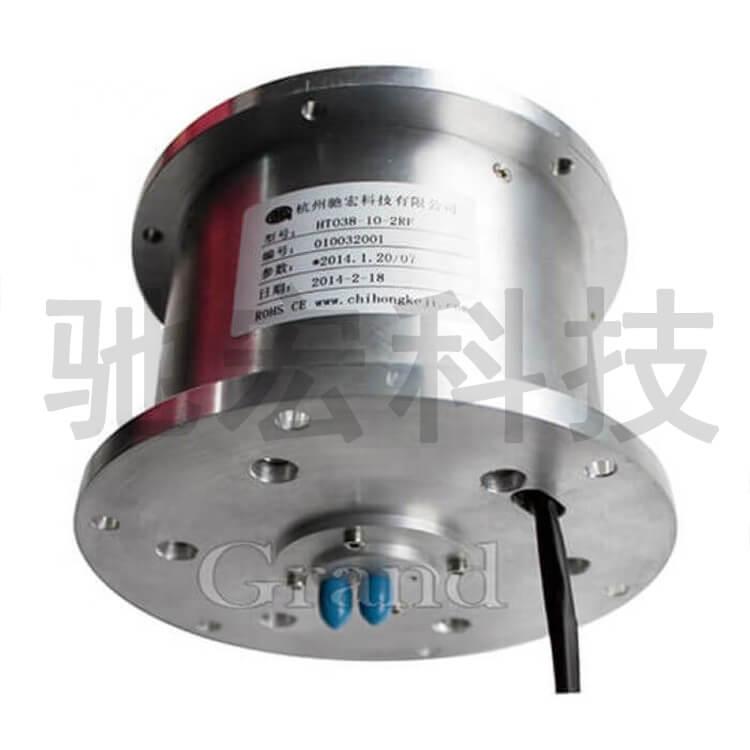This article serves as a comprehensive guide to slip ring electrical contacts. We delve into their core functions, working mechanisms, different types, materials used, various applications, and maintenance requirements. Future developments and challenges in this realm are also explored, offering a holistic view of this vital component in various electrical systems.
Introduction to Slip Ring Electrical Contacts
Slip ring electrical contacts play an indispensable role in a variety of rotating systems, operating as the critical bridge between stationary and moving parts. But what exactly are these components, and how do they contribute to the normal operation of intricate electrical systems?
A slip ring electrical contact, often simply shortened to ‘slip ring,’ is a device that allows the transmission of electrical power or signals from a stationary structure to a rotating component. In essence, these rings serve as the electrical ‘connective tissue’ that empowers the movement of diverse systems without disrupting the transfer of power, data, or signals.
Let’s consider a common ceiling fan. The fan blades need to rotate, but they also require an uninterrupted supply of power from an immobile source, the electrical mains in this case. It’s the slip ring’s job to ensure that even as the fan blades move continuously, the power isn’t cut off. Now imagine this on a much larger scale – weather radars, electric generators in wind turbines, rotating tanks in manufacturing industries, or CT scanners in healthcare sectors. These are just a few examples where slip ring electrical contacts facilitate uninterrupted and reliable operation.
Without these components ensuring a smooth transition of power between stationary and rotating parts, many applications in industrial and home environments would simply cease to function correctly. They are the silent facilitators of many processes we take for granted, empowering continuous and dependable operations. This article seeks to provide further insights into the world of slip ring electrical contacts, highlighting their significance, varieties, materials used, applications, and the future directions shaping this field.
Working Principle of Slip Ring Electrical Contacts
To understand the invaluable contributions slip ring electrical contacts make to a range of industries and devices, one must grasp the essential principles that govern their operation.

A slip ring electrical contact comprises two primary components: a ring or set of rings, and brushes. The ring(s), which rotate, are either mounted on a rotating shaft or housed within the rotating part of the system. These rings are made of conductive metals, facilitating the passage of electric currents or signals.
Meanwhile, the brushes maintain contact with the rings’ surfaces and are connected to stationary wires. These brushes, often made of conductive materials and blended with carbon to manage friction, press gently against the moving rings. The pressure must be neither too strong nor too weak; it should be just right to enable consistent electrical transfer while minimizing wear caused by friction.
As the system rotates, the brushes slide smoothly over the ring surface, maintaining an electrical connection. This process ensures the uninterrupted transition of power, data, or signals between the stationary structure and the rotating component. The simplicity yet ingenuity of this design enables countless applications and systems to operate efficiently, even during constant rotational movement.
Various factors can impact the efficiency of a slip ring’s electrical contact, including the materials used and the contact pressure between the brushes and rings. By understanding and optimizing these factors, slip ring electrical contacts serve as critical and reliable solutions for enabling dependable electrical connections in rotating situations.
Types of Slip Ring Electrical Contacts
The world of slip ring electrical contacts is as diverse as the devices and industries they power. Each type has unique characteristics that make it suited to a particular application or environment, dictated by variables like data rates, power requirements, and operational speed. In this section, we’ll delve into the various types of slip ring electrical contacts, namely mercury-wetted slip rings and wireless slip rings, among others, defining their unique attributes and ideal use cases.
- Mercury Wetted Slip Rings: These slip rings use mercury (a conductive liquid metal) for making electrical contact. Due to mercury’s unique physical properties, mercury-wetted slip rings can carry signals with reduced electrical noise, making them ideal for transferring sophisticated and sensitive data. Despite their high reliability, the use of mercury also comes with some restrictions due to its toxicity and environmental concerns. So, these slip rings are typically deployed in controlled environments and are engineered to account for mercury’s specific handling requirements.
- Wireless/Capacitive Slip Rings: Pushing the limits of innovation are wireless or capacitive slip rings. As the name implies, these slip rings transmit power and signals without physical contact. Capacitive slip rings work by storing and transferring energy via an electric field, making them suitable for applications with low data rates and minimal rotations. Also, given the lack of physical contact, these slip rings can offer longer life spans and reduced maintenance requirements.
- Pancake Slip Rings: These slip rings have a flat disc-shaped design, resembling a pancake. They are characterized by concentric rings aligned on a flat surface. This kind of slip ring is beneficial when length is a limiting factor, even though it tends to have a larger diameter.
- Fiber Optic Rotary Joints (FORJ): A more specialized variant is the fiber optic rotary joints. These are designed for transferring high-speed data and signals while rotating, minimizing data loss and signal interference.

Understanding these variations allows for more informed decisions about which slip ring electrical contact is best suited to a particular application or use case. Each type has its pros and cons, and the appropriate choice depends largely on contextual considerations and specific performance requirements.
Materials Used in Slip Ring Electrical Contacts
The materials used in the manufacture of slip ring electrical contacts significantly affect their overall efficiency, durability, and longevity. The choice of material needs to strike a balance between factors such as electrical conductivity, wear rates, resilience to environmental conditions, and cost-effectiveness. Brass, gold, and silver are some of the most commonly used materials in slip ring contacts due to their unique properties.
- Brass: Brass is a routinely used material in the industry, thanks to its excellent balance between performance and cost. Brass slip rings offer good electrical conductivity and are resistant to corrosion. They are robust and well-suited to applications where there’s a need for high mechanical strength. However, they also generate more electrical noise and wear at a faster rate compared to other materials.
- Gold: Gold is known for its premium electrical conductivity and corrosion resistance. It is used in slip rings where low-power, precise signals need to be transmitted with minimal electrical noise. Gold slip rings are ideal in sensitive applications where data integrity is crucial, like in medical or scientific equipment. The downside to using gold is its high cost, which makes it less feasible for applications where budget is a concern.
- Silver: Silver’s outstanding conductivity makes it the material of choice where high data rates or power transfers are involved. Silver slip rings, however, tend to tarnish over time, which can affect their performance. They are usually used in controlled environments where the impact of tarnishing can be minimized.

Ultimately, the ideal material for slip ring electrical contacts depends on a careful evaluation of specific application requirements. It is necessary to consider the electrical needs, expected wear and tear, environmental conditions, and budget constraints. Technological advances are also leading to the exploration of new materials like graphitic compounds or novel alloys that promise improved durability and performance of slip rings in the future.
Applications of Slip Ring Electrical Contacts
Slip ring electrical contacts play a crucial role in a wide range of industries, enabling the seamless transmission of power, data, or signals between rotating and stationary parts. From renewable energy solutions to medical devices and military applications, slip ring contacts empower these diverse systems to function reliably and efficiently. In this section, let’s explore some notable applications across various sectors.
- Wind Energy: One of the most prominent applications of slip ring electrical contacts is within the wind energy sector, specifically, wind turbines. These enormous structures rely on slip rings to transmit power generated by the rotating nacelle (the part housing the generator and other components) to the static tower. Furthermore, slip rings enable data transmission from monitoring and control systems, ensuring the wind turbines operate safely and efficiently.
- Medical Imaging: Devices such as MRI (Magnetic Resonance Imaging) and CT (Computed Tomography) scanners are integral to modern medical diagnostics. These imaging machines rely on the continuous rotational movement of their components to capture high-resolution images of the human body without interruption. Slip ring electrical contacts play a vital role in these devices, enabling the transfer of power and data during rotation, resulting in precise and accurate diagnostic results.
- Radar Systems: Today’s radar antenna systems, like those used in air traffic control or weather monitoring, require constant rotation and precise signal transmission to track objects or monitor meteorological conditions effectively. Slip ring electrical contacts facilitate the delivery of power and data in 360° rotating radar antennae, ensuring smooth, real-time tracking and communication capabilities.
- Industrial Applications: Slip ring electrical contacts have a wide array of applications within the industrial sector, too. They can be found in various automated machinery, robotics, and material handling systems as they enable rotational movements while transferring electrical power or signals. Rotating tanks, large cable reels, and indexing tables are just a few of the systems that are often dependent on slip rings.

In summary, slip ring electrical contacts empower numerous applications across diverse industries. They enable the crucial function of maintaining electrical connections between rotating and stationary parts, ensuring the efficient and reliable operation of countless devices and systems around us.
Installation and Maintenance of Slip Ring Electrical Contacts
Proper installation and maintenance of slip ring electrical contacts are essential to guarantee their efficiency, performance, and longevity. In this section, we’ll explore the installation process, challenges often faced during this stage, and maintenance practices that ensure reliable, lasting function.
Installation
The installation process may differ slightly depending on the specific type of slip ring, but common steps usually include:
- Positioning and Mounting: The first step involves positioning the slip ring in the designated location within the system. This may require mounting the slip ring assembly onto a rotating shaft or a stationary structure, depending on its intended application.
- Connecting Wires and Brushes: With the slip ring in place, installers need to connect the wires carrying the power, data, or signal from the stationary source to the brushes. Simultaneously, the wires leading from the rotating side need to be connected to the rings. Ensuring the quality of these connections is vital to maintaining optimal electrical performance.
- Adjusting Brush Pressure: This step involves adjusting the pressure of the brushes against the rings. Maintaining the ideal amount of contact pressure between the brushes and rings is crucial for efficient electrical transfer while minimizing wear and tear caused by friction.
Common Challenges
During installation and operation, slip ring electrical contacts may face certain challenges, which include:
- Maintaining Proper Brush Pressure: Establishing the correct brush pressure is critical for performance and durability. Too much pressure can cause premature wear and greater friction, while too little pressure can lead to inconsistent electrical transfer.
- Electrical Noise: Slip rings can generate electrical noise due to contact resistance, which can disrupt data or signals being transmitted. High-quality materials and accurate brush pressure adjustments can help to mitigate this issue.
- External Environmental Factors: The performance and lifespan of slip rings can be impacted by factors such as temperature and humidity, emphasizing the importance of selecting the appropriate material and design according to specific application requirements.
Maintenance
Regular maintenance is fundamental to optimizing the performance and lifespan of slip ring electrical contacts, which may involve:
- Cleaning: Routine cleaning of the slip ring surface and brushes helps to remove dust, debris, or accumulations that could affect electrical performance and cause wear.
- Brush Replacement: Brushes naturally wear down during operation. Regular inspection is needed to ensure that they are replaced before their performance begins to decline.
- Lubrication: In specific types of slip rings, applying lubricant is necessary to minimize friction and wear between the brushes and rings.
- Inspecting Connections: Occasionally checking the connections between wires, brushes, and slip rings is essential to ensure that the electrical transfer remains reliable.
In conclusion, proper installation and maintenance of slip ring electrical contacts are critical to maintaining their performance and durability. By addressing challenges and implementing best practices during installation and ongoing care, users can guarantee reliable, long-lasting operation.
Slip Ring Electrical Contacts Common Concerns and Solutions
Users of slip ring electrical contacts may face particular concerns regarding the performance, lifespan, and reliability of these essential components. In this section, we’ll explore these common concerns and offer potential solutions to mitigate or address them.
- Electrical Noise: Electrical noise is a frequently encountered issue in slip ring electrical contacts. Noise can arise from contact resistance, oxidation on the contact surface, or vibration. This can interfere with the transmission of data, signals, and even power. To address this concern, consider the following:
- Use high-quality materials with low contact resistance, such as gold or silver, especially in sensitive applications where signal integrity is critical.
- Ensure clean brush and ring contact surfaces, as well as optimal brush pressure.
- Implement adequate shielding for the slip ring assembly to protect it from external sources of noise.
- Longevity: Maximizing the lifespan of slip ring electrical contacts is essential for maintaining ongoing system operability and minimizing downtime. To optimize the longevity of these components:
- Invest in high-quality materials and reputable manufacturers.
- Select the appropriate material and design based on your specific application requirements.
- Implement a proactive maintenance schedule, which includes cleaning, inspections, and timely brush replacements.
- Contact Wear: The wear of brushes and rings is an inevitable part of slip ring operation, but excessive or rapid wear can impact efficiency and reliability. To mitigate contact wear:
- Ensure that brush pressure is adjusted accurately to minimize excessive friction between brushes and rings.
- Choose the appropriate brush materials based on the contact surface’s conductivity, to limit the production of debris.
- Regularly clean and inspect both brushes and rings for signs of wear or damage, and replace them as needed.
- Temperature and Humidity Variations: Environmental conditions like temperature and humidity can impact the performance and lifespan of slip ring electrical contacts. To address these concerns:
- Opt for materials and designs that can withstand the specific conditions of your application, such as selecting corrosion-resistant materials for high-humidity environments.
- Consider implementing protective enclosures or seals for the slip ring assembly to minimize exposure to potential contaminants or moisture.
- Monitor the environmental conditions around the slip ring assembly and mitigate any sudden temperature or humidity fluctuations.
By proactively addressing these common concerns and following the suggested mitigation techniques, users of slip ring electrical contacts can ensure that their systems operate efficiently and reliably, ultimately enhancing the performance and lifespan of these crucial components.
Want to discuss your slip ring needs? Fill out the form and we’ll reach out to you.
Innovations and Future Developments in Slip Ring Electrical Contacts
The field of slip ring technology is continually evolving, driven by advancements in materials, design, and manufacturing processes. In this section, we’ll discuss some of the recent and upcoming developments that are shaping the future of slip ring electrical contacts.
- Materials Innovations: As industries seek to improve the reliability and durability of their rotating electrical connections, ongoing research into new materials for contacts and brushes offers promising possibilities. For instance, the use of advanced polymers and alloys, which offer high conductivity coupled with lower wear rates, could extend the lifespan of slip rings and optimize their performance, particularly in demanding applications.
- Enhanced Design & Manufacturing Processes: Cutting-edge innovations in design software and manufacturing techniques, such as computer-aided design (CAD) and additive manufacturing (often known as 3D printing), are enabling the development of slip rings with complex geometries and customized features. These technologies can increase the precision, performance, and flexibility of slip ring assemblies, meeting the diverse needs of various industries.
- Fiber Optic Slip Rings (FORJ): With the increasing demand for high-speed data transmission, fiber optic rotary joints (FORJs) represent a revolution in slip ring technology. FORJs enable the seamless transmission of high-bandwidth data between rotating and stationary parts, an essential feature for industries like telecommunications, data centers, and advanced medical imaging.
- Non-Contact Slip Rings: Another forward-looking development is the advent of non-contact slip rings, which use magnetic or inductive coupling, or even light, to transfer power or data without physical contact between the rotating and stationary components. This design can reduce friction, resulting in lower maintenance requirements, increased lifespan, and minimized signal noise.
- Integrated Slip Rings: As systems and devices become more compact, there’s a growing demand for slip rings that incorporate additional components like encoders, sensors, or even active electronic devices. These integrated slip rings streamline system designs by reducing the number of discrete components, leading to space savings and increased overall system reliability.
As we look into the future, these innovations bode well for the evolution of slip ring electrical contacts. By continuously pushing the boundary of materials, design, and manufacturing techniques, excellent advancements in the function, reliability, and lifespan of slip rings can be anticipated. These developments will ultimately empower a broad range of applications, helping to drive progress in numerous industries.
Conclusion
In conclusion, slip ring electrical contacts are indispensable components of many modern systems requiring rotational movement. As technology progresses, addressing the key concerns of noise, wear, and longevity in slip ring design promises exciting developments shortly. Understanding these aspects aids in prudent decision-making when selecting and maintaining slip ring electrical contacts.
See What We Can Do

